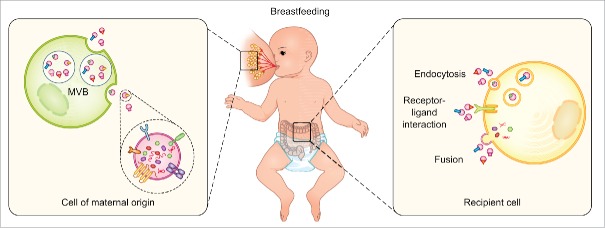Figure 4.
The role of breastmilk extracellular vesicle (EV) long non-coding RNA (lncRNA) in maternal-infant cell-cell communication: A conceptual model. [Left] Human breastmilk contains a mixture of diverse components, including EVs loaded with maternal lncRNAs. [Right] The EV-encapsulated lncRNAs, e.g. CRNDE, DANCR, GAS5, SRA1, and ZFAS1, which are involved in processes such as cell cycle control, apoptosis, immune cell regulation, steroid hormone signaling, adipogenesis, glucose, and lipid metabolism, can be delivered to the infant and have direct effects in the gastrointestinal tract. Absorption through intestinal epithelial cells is also thought to occur, allowing breastmilk-derived lncRNAs to reach various organs and a repertoire of cells via the systemic circulation of the infant and potentially perform functions, such as developmental programming and immunoprotection.

